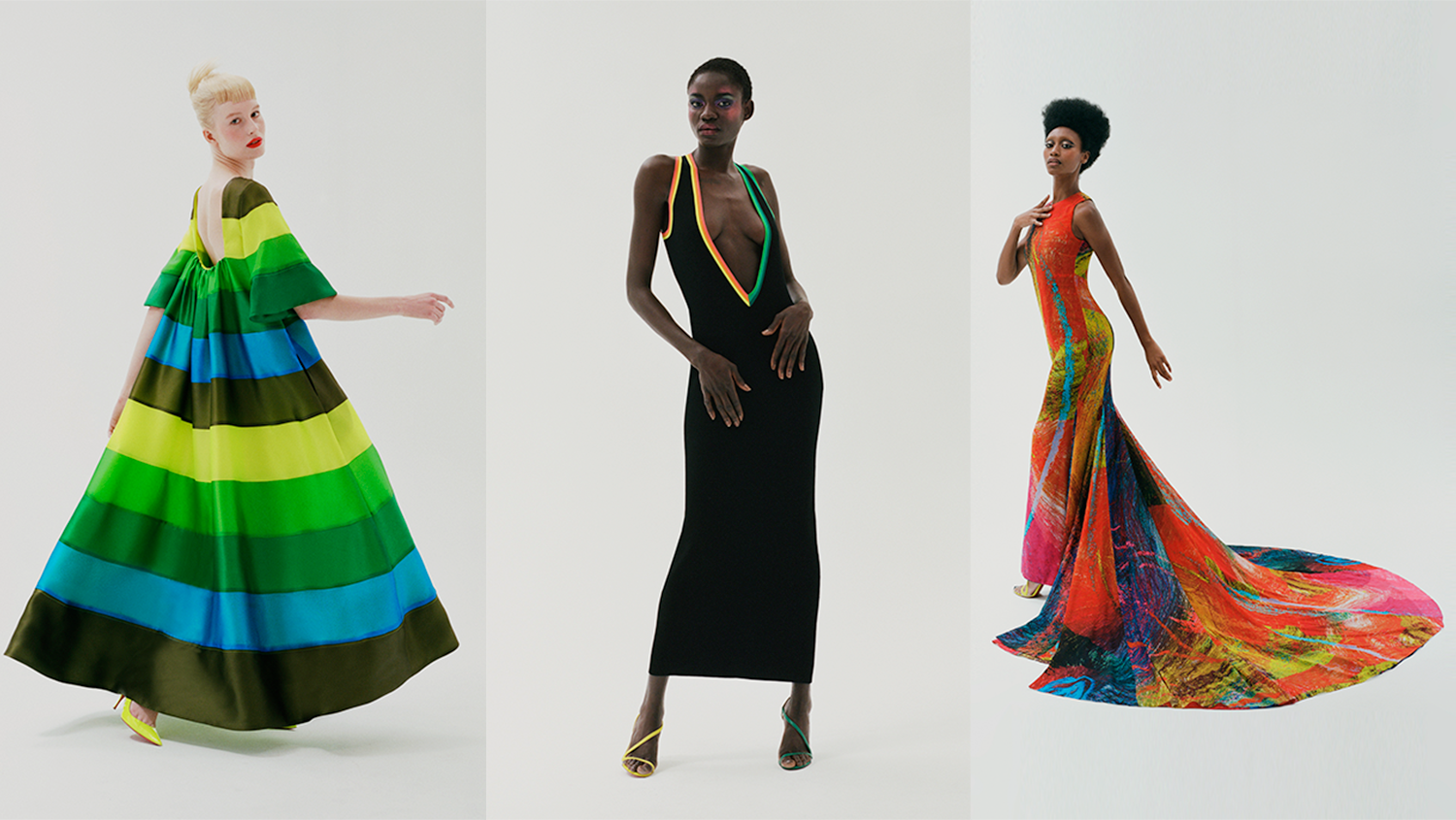Fashion is an industry fond of labels — ‘emerging’, ‘queer’, ‘Black’, and ‘sustainable’ are just some of those currently in vogue. As well-meaning — albeit misguided — as their use may be, little thought is paid to the limitations they place on the talents they denominate. Often caging them within stereotype-fuelled expectations, such categories implicitly deny designers the right to work and grow on their own terms. Someone who knows all too well what it’s like to be on the receiving end is New York-based Christopher John Rogers. For Collection 009, however, he set about dispelling the labels that many in the industry have tried to stick him with from the start. It asks: Is the fashion he creates inherently Black, or is he simply a designer who happens to be Black? Is his work queer because he is queer, or because it exists at odds with the norm?
It also proves his transition from ‘emerging’ to ‘emerged’ — a crowning moment for a year in which Christopher established himself as a leading figure amongst a new generation of designers reshaping the industry. Just a few of his 2021 highlights include (deep breath!): a Target collaboration, features on the Gossip Girl reboot and the new exhibition at The Met’s Costume Institute, making the LVMH Prize, and taking home the CFDA Award for Womenswear Designer of the Year — all bringing his vision to its broadest audience yet.

With wide-spread recognition, though, come expectations. Over the past three or so years, Christopher John Rogers has become a byword for joy, volume, colour and rainbow — read any given feature on him, and there’s a good chance they’ll all figure. While it is admirable for a designer to have established such a recognisable set of signatures so early on, they also have their limits. In his latest collection, Christopher expands on his brand’s vocabulary by ruminating on the contrasts that characterised his youth. Monochromatic silhouettes and prim shapes evoke quintessentially American preppiness and Southern poise, while quirky proportions and cut nod to the designer’s teenage years, spent discovering himself through online forums and video games. Beyond defying categorisation, this is a collection committed to “trying to figure out why certain things that are reoccurring, are reoccurring,” Christopher says — a push and pull between familiarity and novelty — resulting in his strongest and most complete proposal yet.
Couture-like details see Christopher flex his pattern-cutting skills, and hand-drawn polka dots and marker scribble prints playfully subvert notions of polish and perfection – values so often associated with American fashion. That’s partly why, for quite some time, he shirked away from labelling himself as an “American designer”, not wanting to fall into the mold cast by the names more traditionally associated with the nation’s fashion output. “Even though it’s a legacy of many people doing really innovative work, I think we harp on the perfect, the chic, the overly sophisticated,” he says, noting the importance he places on treading his own path away from the one well-trodden. “Being a little off just makes a more interesting thing for my customer, more real, more modern.”
From his Brooklyn apartment, Christopher joined us on a Zoom call to discuss happenstance and imperfection, his relationship with labels and categorisation, and the balance between leaning into and defying expectations.
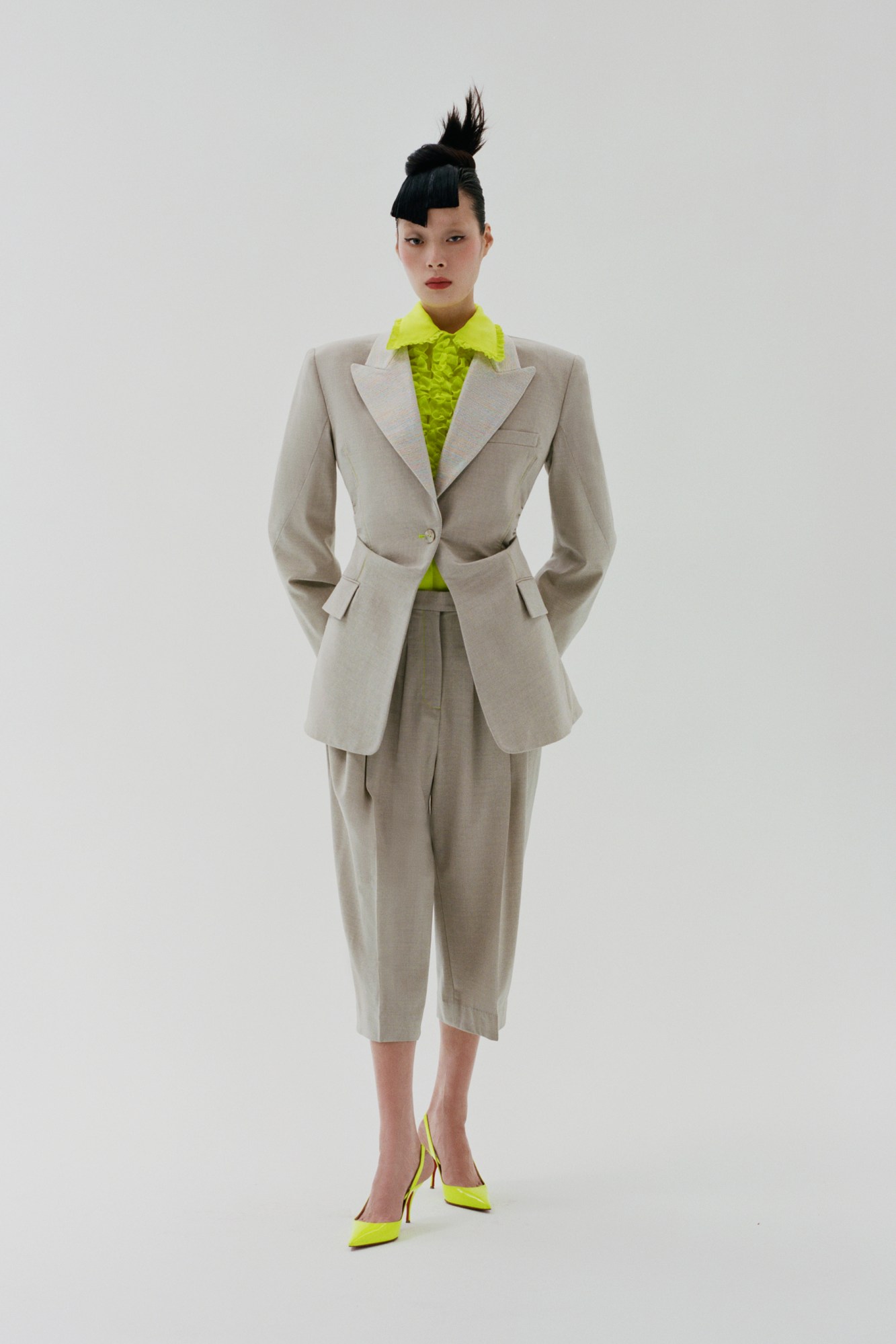
In this season’s release, you mention happenstance, this idea that serendipity informs the design process as much as research and intent. Has happenstance always been the CJR method?
Yeah, it’s always there, everything is always a little fucked up [laughs].
Where does it fit into the design and narrative of a collection?
It’s about this idea of imperfection and grasping for ‘perfect’, but never quite making it there. Growing up there was always this one kid, this character on TV or a video game that was perfect, and you tried to be that but couldn’t be anything other than yourself. That adjacency to perfection is really interesting to me. It’s like getting dressed up for an event and wearing a black suit and wanting a black belt but only having a brown one. It’s a little off but you have to convince yourself that it works — bitch, it is what it is! [laughs] That off-ness feels familiar to me because it’s happened to me so much. I wanted to intentionally push that forward as something that you associate with the brand without even knowing.
You’ve mentioned the idea of categorisation, of being an ‘American designer,’ for example. What is your relationship with categorisation?
I mean I definitely fit into categories. I’m Black, I’m queer, I’m from the South, those things are facts. But I’ve also never neatly fit into expectations of what someone in those categories would look like or act like. I don’t necessarily perform the category, I’ve never been able to. I don’t have the best relationship with categorisation because it feels limiting. I don’t like to categorise; I like when there’s crossover or spillage between spaces, it feels more real. It’s neither nor – I feel more comfortable there.
“When people found out what I looked like, there was a lot of talking about church dressing, people made it about a racial exercise or an overly queer exercise. The work was reduced to two things that you could pinpoint to my identity”
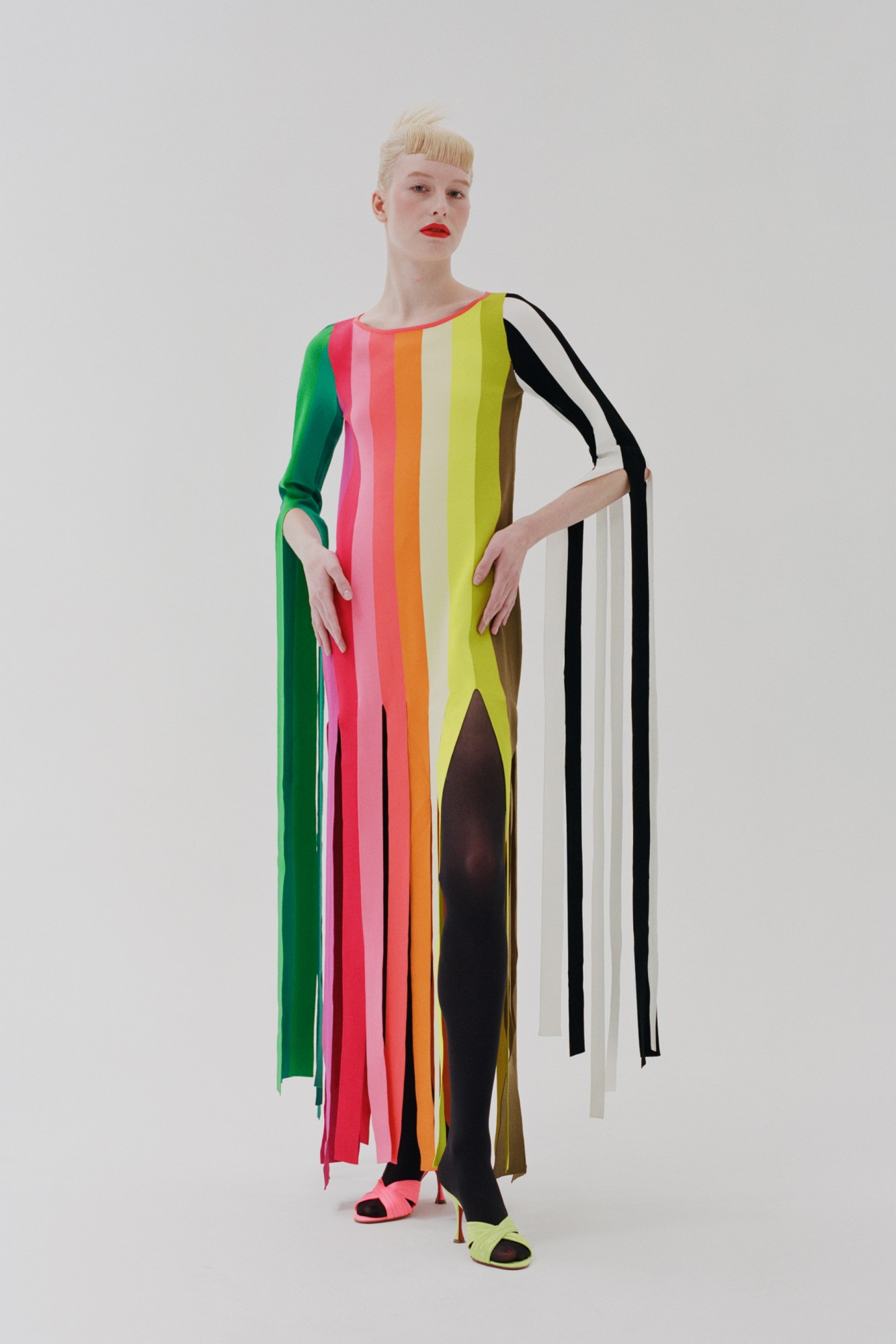
In your release you’ve posed the question: “When one is forced to discover themselves through societal limitations and expectations of how they should present themselves, how does that feeling inform a designer of that experience?” What are those limitations and expectations you refer to?
So many. When I was in elementary school, I remember my classmates asking me, ‘Are you gay?’ I kind of knew the answer was yes because they’re asking in a way that presumed that it was, but I didn’t know what it meant. The way that I was acting naturally was somehow congruent with the expectation of how a gay person would act. Now that I’ve gotten older, I don’t feel a need to perform femmeness, but I also don’t need to reduce my femmeness either. There’s a lot of nuance to being queer, and everyone’s queer experience is different, and every person of a Black experience is different as well.
The expectations that people have because of the way you look or you act naturally, not even because of how you identify or who you actually are, can feel weighty and uncomfortable. I remember certain people asking me why I listen to a certain type of music, that someone who looked like me shouldn’t listen to Evanescence, or Avril Lavigne, or Daft Punk — even though Daft Punk did house music, which is inherently very Black. To certain people I wasn’t being Black enough, or queer enough, or I was being too queer, too Black, or too Southern. I was always oscillating between spaces. I knew how to perform what needed to be performed for me to survive, but I also didn’t feel free. I was always aware of how people were perceiving me.
That semi-anxious experience made me want to create work that didn’t force anyone to be anything other than what they want to be while wearing the thing. I don’t like making things that are too classic or too clean, there always has to be something off about it because I think that allows you the space to relax. I also don’t like making things that are too extreme, if something is very pushed, there has to be something that feels very familiar about it as well.

How do you think these limitations or expectations affect the perception of your work?
Before people knew what I looked like, the conversation around the work was very much about the cut, how it made people feel, the color and the work itself. When people found out what I looked like, there was a lot of talk about church dressing, people made it about a racial exercise or an overly queer exercise. The work was reduced to two things that you could pinpoint to my identity, and I felt like people weren’t really listening to what I was saying and were just grabbing onto things that made it easy to understand the work. It was reduced to ‘eveningwear inspired by Black women and drag queens,’ and it is informed by me having associations with those things, but it’s so much more. It felt like people were flattening the nuance of what I was trying to do and they weren’t allowing me to be everything that I wanted to be, or could be, or was.
That being said, over the past few seasons I’ve tried to flex my skills and show that the brand is so much more than just any one thing. It’s so much more than the knitwear, which is really popular for us, it’s more than just red carpet dressing, which we’ve done a little bit less of, and it’s more than just color. I’m trying to show people that it’s about everything existing at once.
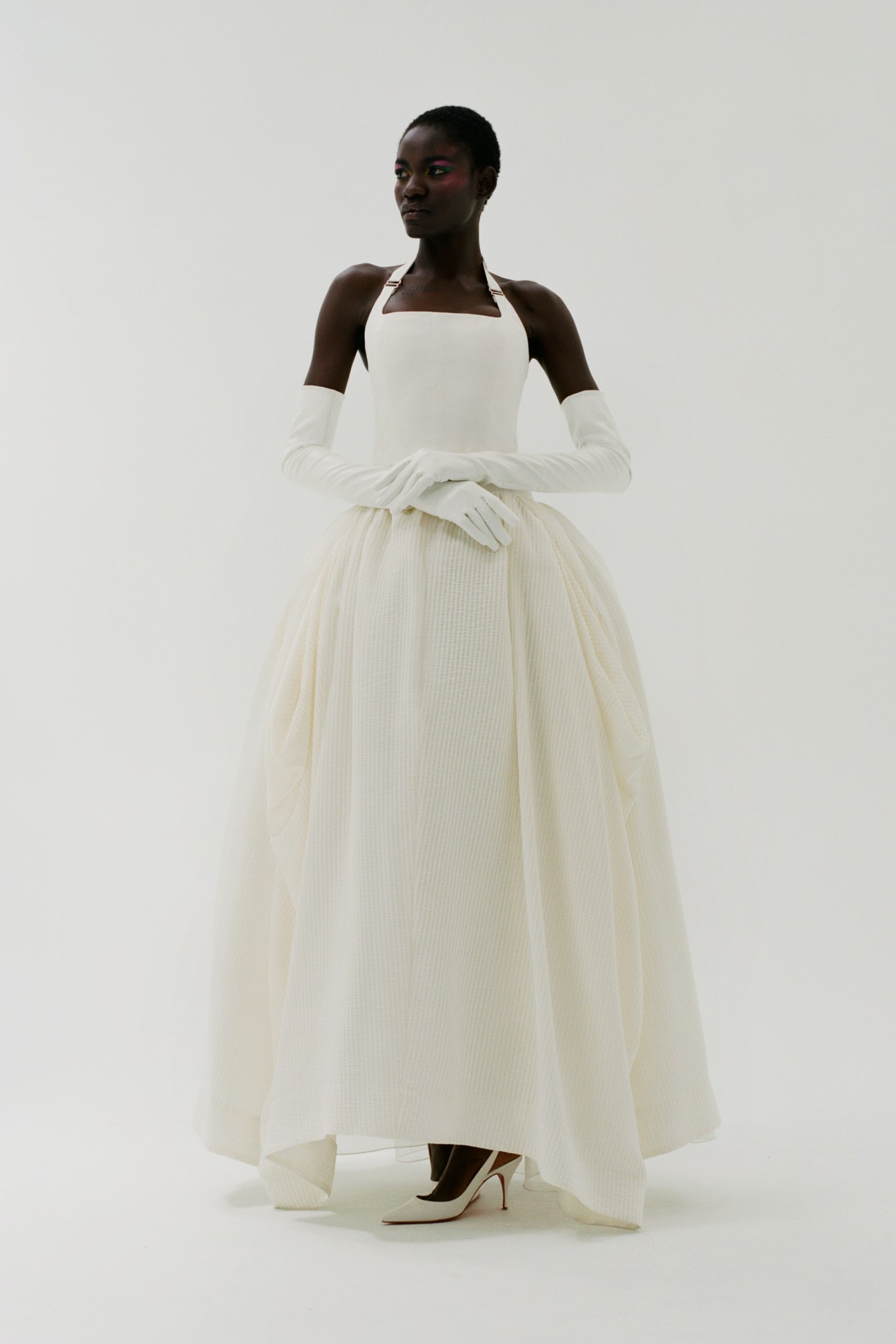
There’s expectations of what the brand is based on what we’ve seen. For this collection, you seem to intentionally defy those but you also seem to lean into them. The red-carpet-ready eveningwear, the knitwear, the monochromatic dressing, it’s all there. What is the balance between challenging expectations and leaning into them?
It’s really fun. It’s fun to teeter on the cliff of both territories.
When I was interning, I noticed that the way one of the designers I was working for — who I believe to be one of the best in the industry — was presenting and designing their collections so differently between when I got there and when I left. Their stockists from the first season weren’t the same for the second season, and by the third season, the work sort of escaped what people were interested in initially. I understood where they were coming from, it was a similar train of thought and they were thinking about design in the same way, the results were just different. I learned at that moment that you can’t switch — you have to provide some sort of consistency in order to survive as a designer in this day and age. I learned that you need to know who you are, you need to know who people think you are, and you need to deliver it every time if what you want is longevity, and that’s exactly what I want. As much as I would love to do an all black and white collection and leave the girls gagging, that’s not something that I can really do. If I want to play with neutrals, I have to think of ways in which it still makes sense for my customer and the world that I’m building. For me, it’s really exciting to balance both things because what I want is for people to buy the clothes, to enjoy the clothes, to relate to them and for there to be a consistent throughline to my work.
“Yes I am a Black fashion designer, but then again what is Black fashion? The work that I do is in conversation with my experience as a Black person, but it’s not me saying, ‘A Black person would wear this, so that’s what I’m gonna make.’”

How do you feel about labels like “Black designer” or “queer designer”? As you said, these things are facts, you are a Black person and you are a queer person, but what is your relationship with those labels being assigned to your work?
My goal is to help add to the canon of what people associate with queer art, or queer fashion, or Black fashion, or Black whatever. Anytime I stumbled upon work that I really liked and I found out that the designer was Black, I was always so excited because it felt like the work was never really performing Blackness, it was informed by their experience as a Black person, but the work that I responded to was never really about it in a very typical way.
I don’t like labels, but I also get them because people like Stephen Burrows, Patrick Kelly or Lawrence Steele aren’t necessarily talked about in fashion history classes. I don’t know, I can’t even talk about it because it just feels so limiting, it just feels reductive. Because yes I am a Black fashion designer, but then again what is Black fashion? The work that I do is in conversation with my experience as a Black person, but it’s not me saying ‘a Black person would wear this, so that’s what I’m gonna make.’ Everything is in conversation with other things, my relationship to it isn’t easy, because I don’t even know what it means.
What are you excited about next?
I’m excited about continuing to get better at what I do in order to be able to do it less. It’s been a lot of hard work up until this point and that’s not going to stop anytime soon, but being more efficient will allow me to play more. I want to have more fun, and I want the people that are around me to experience it too.
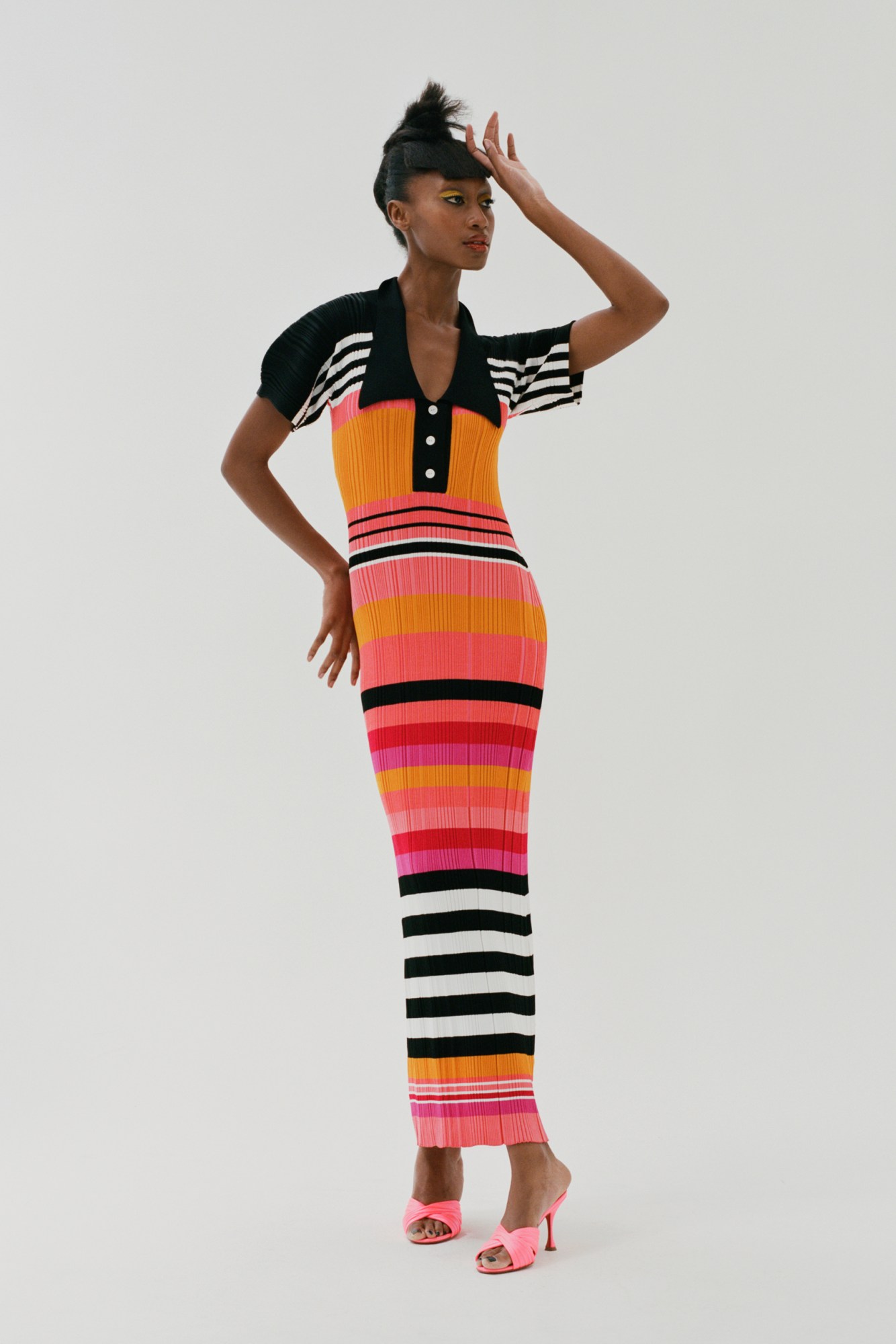

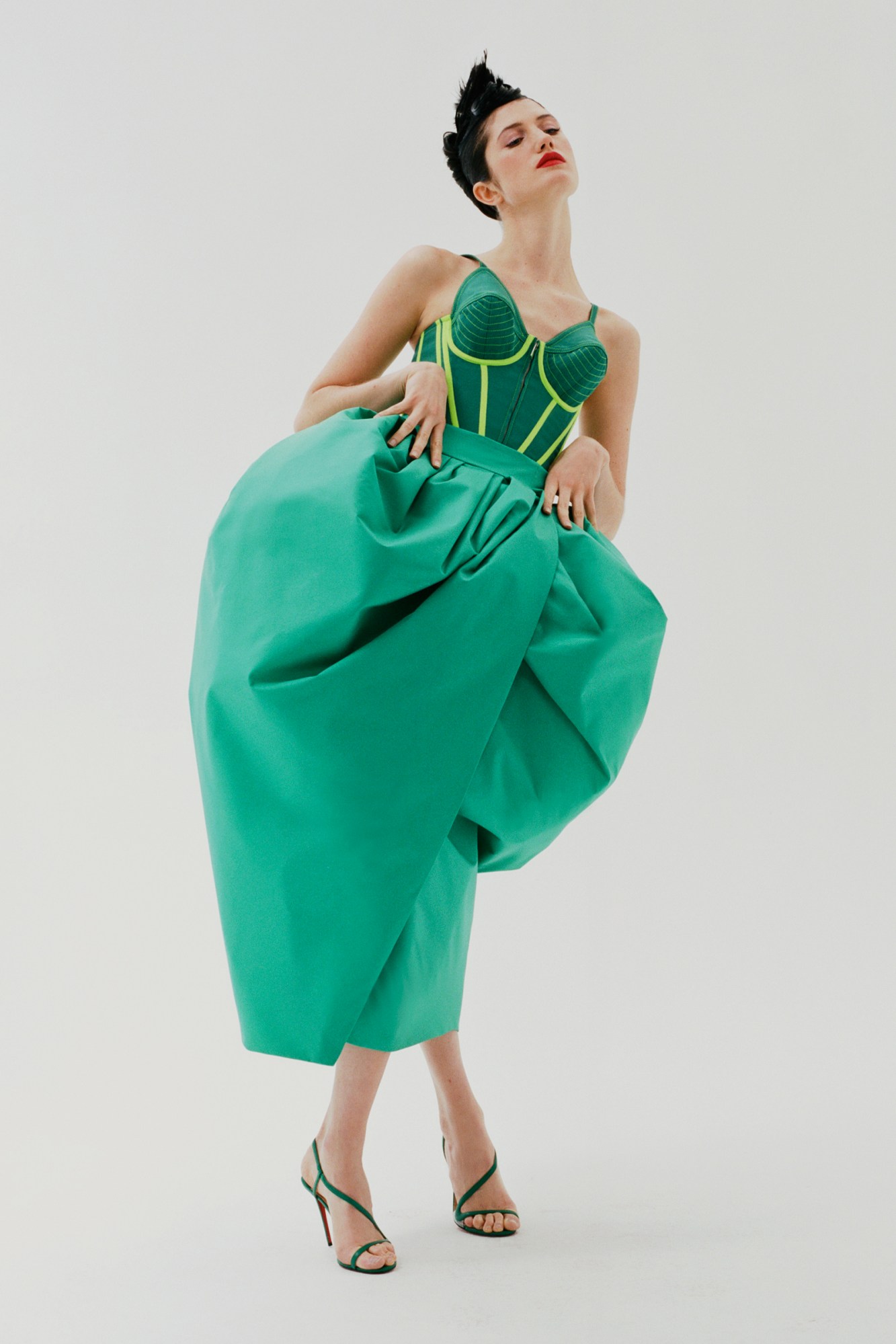

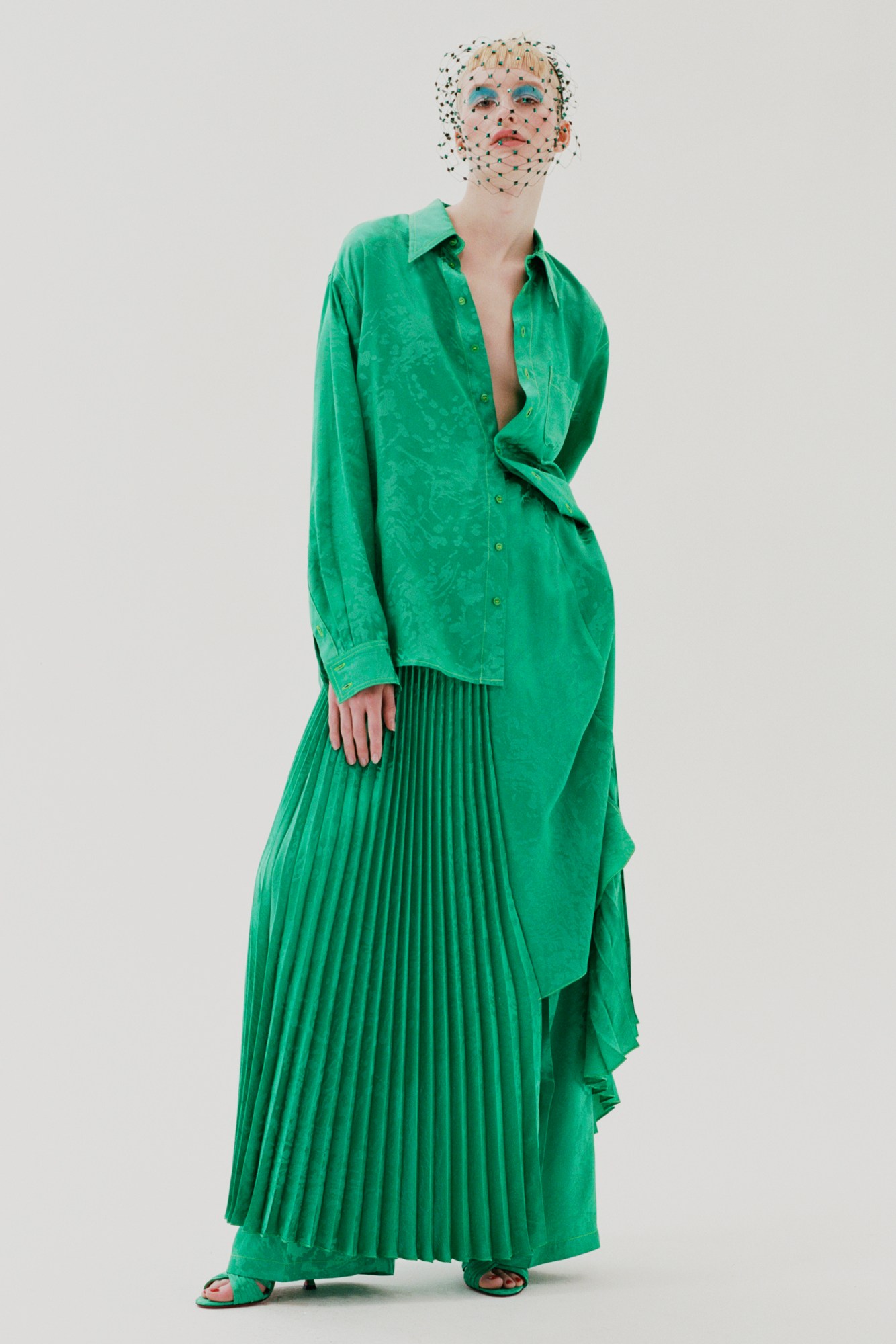
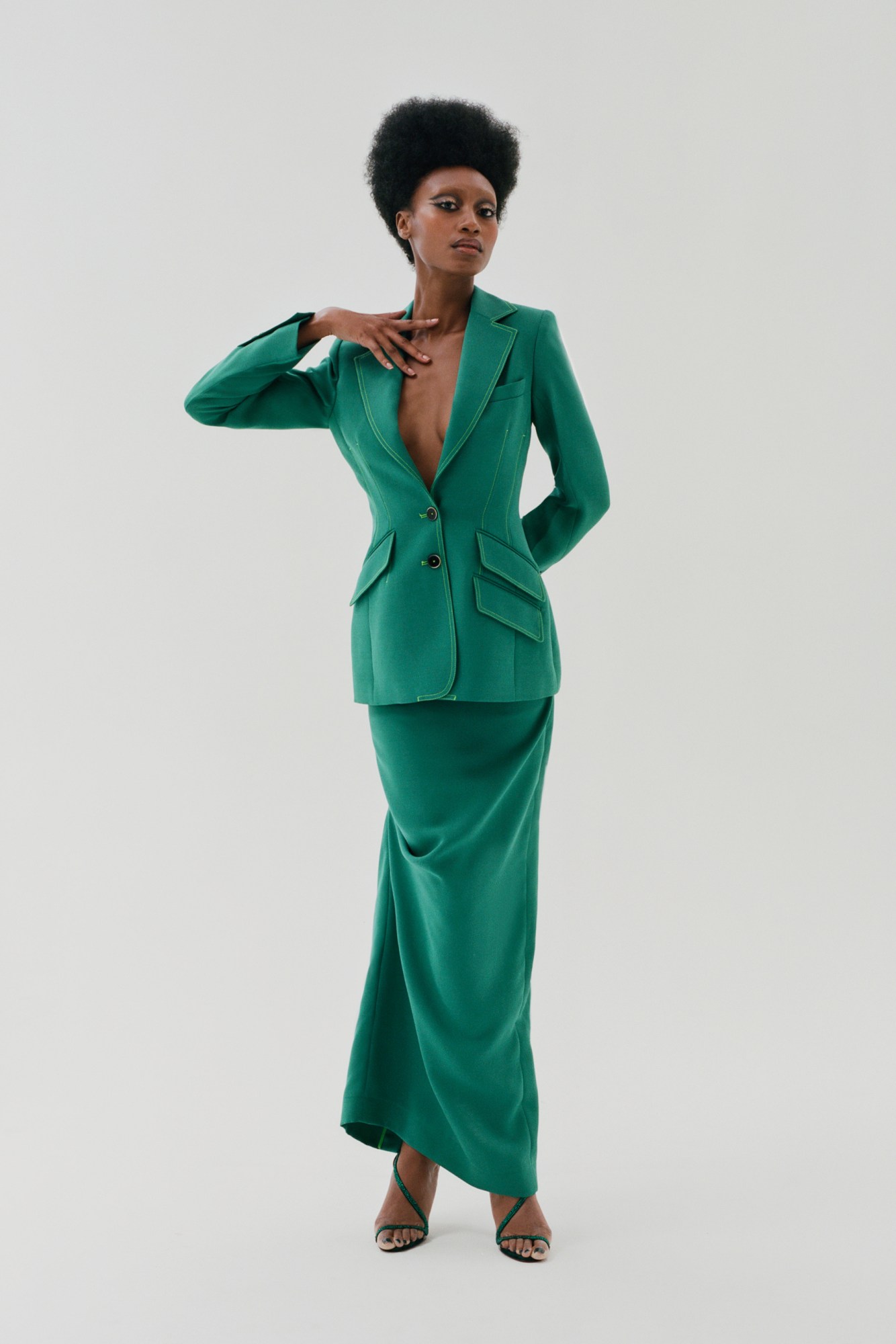
Follow i-D on TikTok and Instagram for more fashion features.
